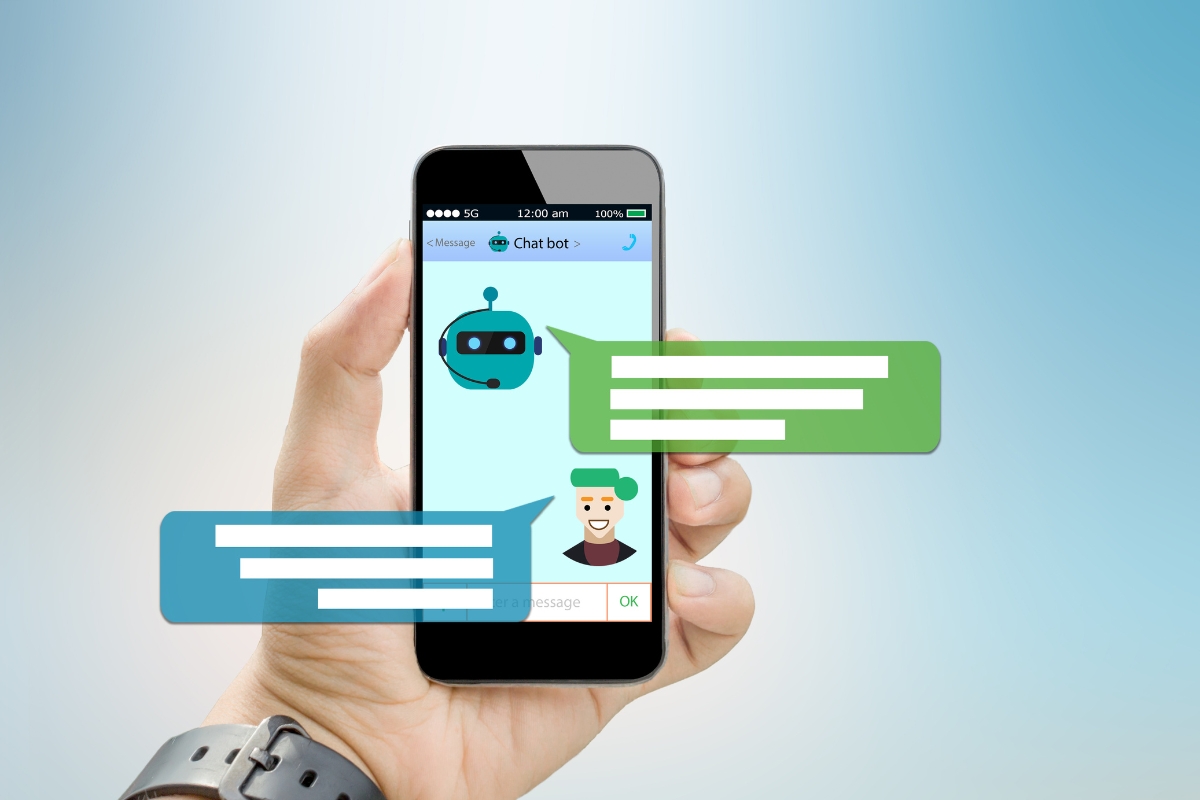Delivering exceptional customer service is more important than ever tooday. However, meeting high customer expectations can be challenging, especially as your business grows.
Business automation solutions offer a powerful way to transform your customer service operations, enabling you to respond faster, personalize interactions, and streamline workflows. By automating routine tasks such as ticket management, customer inquiries, and follow-ups, you can free up your team to focus on more complex issues and provide a better overall experience for your customers.
In this guide, we’ll explore how business automation solutions can help with customer service transformation.
From Ordinary to Extraordinary: How to Transform Customer Service with Automation Solutions
Leveraging AI-Driven Chatbots for Instant Customer Support

One of the most significant advancements in customer service technology is the use of AI-powered chatbots. The way businesses engage with their customers is being transformed by these smart virtual assistants, offering round-the-clock assistance and swiftly addressing inquiries.
By leveraging natural language processing and machine learning algorithms, AI chatbots can understand customer inquiries and provide accurate responses in real time.
With AI-driven chatbots, businesses can offer 24/7 customer support without the need for human intervention. Gone are the days when customers had to endure lengthy queues or struggle through intricate IVR systems to seek help. Now, they can effortlessly interact with a chatbot via a website or messaging platform and promptly obtain answers to their queries.
Moreover, these chatbots can be programmed to handle a wide range of customer queries, from basic FAQs to more complex issues. Businesses have the ability to receive product suggestions, carry out transactions, monitor orders, and address technical issues with the help of automation. This enables companies to allocate their human resources towards essential and strategic tasks by automating these repetitive duties.
Implementing Intelligent CRM Systems to Personalize Customer Interactions

A key aspect of delivering exceptional customer service is personalization. Customers expect businesses to understand their preferences and provide tailored experiences that cater to their individual needs. This is where intelligent Customer Relationship Management (CRM) systems come into play.
An intelligent CRM system leverages data analytics and machine learning algorithms to gather insights about customers’ behavior, preferences, and purchase history. This information enables businesses to personalize interactions at every touchpoint along the customer journey.
For example, when a customer contacts support regarding a specific issue or inquiry, an intelligent CRM system can instantly retrieve relevant information about that individual’s previous interactions with the company. This allows agents to provide a more personalized and efficient resolution, enhancing the overall experience.
Furthermore, intelligent CRM systems can also automate follow-up actions, such as sending personalized emails or notifications based on customer behavior. This level of personalization not only improves customer satisfaction but also increases the likelihood of repeat business and brand loyalty.
Enhancing the Buyer Experience Through Predictive Analytics

Predictive analytics is changing the way businesses handle client service by using data to anticipate what customers might need before they even ask. Instead of just reacting to problems as they arise, companies can now foresee potential issues and take steps to prevent them, creating a smoother and more satisfying experience for their customers.
For example, imagine a telecom company that notices a pattern in customer behavior—perhaps a drop in usage or fewer interactions with their services. Using predictive analytics, the company can identify these customers as likely to switch to a competitor. To counter this, they might offer special promotions or tailored services aimed at keeping these customers happy before they even think about leaving.
Beyond customer retention, predictive analytics can help companies manage their resources more effectively. By predicting when client service demands will peak, a company can ensure they have enough staff on hand to handle the rush, reducing wait times and improving overall service.
This approach also extends to product recommendations. When a business knows a customer’s preferences and buying history, they can suggest products that the customer is more likely to want, making the shopping experience more personal and enjoyable.
Optimizing Response Time with Automated Ticketing Systems

Optimizing response time is a critical aspect of delivering amazing customer service. Automated ticketing systems significantly contribute to this by ensuring that customer inquiries are handled swiftly and efficiently.
When a customer submits a request—whether through email, chat, or a web form—the automated system instantly logs the details, assigns a unique identifier, and organizes the ticket in a centralized database. This immediate capture of information prevents any delays in acknowledging the customer’s issue, which is crucial in maintaining customer satisfaction.
But the real power of automated ticketing lies in its ability to prioritize and route tickets effectively. By applying predefined rules or even machine learning algorithms, the system can categorize tickets by urgency or type of issue.
For example, an inquiry about a security breach might be flagged as high-priority and routed to a specialized team, while a general information request might be assigned a standard response time. This prioritization ensures that critical issues are addressed first, reducing the chances of escalation and improving overall customer satisfaction.
Integrating Business Automation Solutions for Seamless Multichannel Support

Integrating business automation solutions to support multichannel communication is crucial in today’s client service landscape. With customers interacting with businesses across various platforms—such as email, phone, chat, and social media—having a cohesive system in place is essential for delivering consistent and efficient support.
Automation tools provide the capability to bring together these multiple communication channels into a single, unified platform. This centralization allows customer service experience agents to view all interactions with a customer in one place, regardless of the channel used.
For example, if a customer reaches out through social media and then follows up via email, the agent can seamlessly access the entire conversation history without switching between different systems. This integration not only streamlines the agent’s workflow but also enhances the customer experience by reducing redundancy and ensuring a smooth, uninterrupted service journey.
Moreover, automation can synchronize customer data across all platforms, ensuring that every interaction is informed by the customer’s complete history with the brand.
For example, if a customer has made previous inquiries or purchases, this information is immediately available to the agent, allowing for more personalized and effective support. This level of integration also helps in routing inquiries to the right department or specialist, based on the customer’s history or the nature of the query, thereby improving resolution times.
Furthermore, integrating automation in multichannel support also allows businesses to implement consistent messaging and service standards across all platforms. Whether a customer is contacting the company through a chatbot on a website or a social media direct message, the responses can be aligned with the brand’s tone and policy, providing a uniform experience.
Empowering Agents with Data-Driven Insights and Automation Tools

Empowering agents with data-driven insights and automation tools is critical for enhancing the efficiency and effectiveness of customer service teams. While automation can streamline many processes, the human touch remains essential in providing personalized and empathetic service. By integrating data analytics with automation, businesses can create an environment where agents are better equipped to meet customer needs.
Data-driven insights allow agents to make informed decisions in real time. With access to performance metrics such as response times, resolution rates, and customer satisfaction scores, agents can quickly identify trends and areas that need improvement.
For example, if an agent notices a drop in satisfaction scores after a particular type of interaction, they can adjust their approach to better meet customer expectations. This not only improves the quality of service but also empowers agents to take ownership of their performance and continuously strive for excellence.
Automation tools further enhance this capability by reducing the manual workload on agents. Canned responses and knowledge bases are invaluable in this regard. Canned responses allow agents to quickly reply to common inquiries with pre-approved, consistent messaging, ensuring that customers receive accurate information without delay.
Meanwhile, knowledge bases provide a centralized repository of information that agents can quickly access to resolve customer queries more efficiently. These tools reduce the time spent on repetitive tasks, allowing agents to focus on more complex customer issues that require human intervention.
Conclusion: Embracing the Future of Customer Service Organizations through Business Automation
Transforming customer service with business automation solutions can elevate your customer experience and streamline your operations. To effectively integrate these automation tools and enhance your service delivery, choose Newman Web Solutions. Our expert team can guide you in implementing the right solutions to meet your business needs.
Contact us at (404) 301-9189 or book a free marketing strategy session to start revolutionizing your customer service interactions today. Let Newman Web Solutions help you create a more efficient and customer-focused business.





